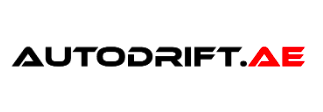AMSTERDAM, December 7, 2021 – Stellantis N.V. (NYSE / MTA / Euronext Paris: STLA) today mapped out its software strategy to deploy next-generation tech platforms, building on existing connected vehicle capabilities to transform how customers interact with their vehicles, and to generate approximately €20 billion in incremental annual revenues by 2030.
This transformation will move Stellantis’ vehicles from today’s dedicated electronic architectures to an open software-defined platform that seamlessly integrates with customers’ digital lives. It greatly expands the options customers have to add innovative features and services via regular over-the-air (OTA) updates keeping vehicles fresh, exciting and updated years after they have been built.
“Our electrification and software strategies will support the shift to become a sustainable mobility tech company to lead the pack, leveraging the associated business growth with over-the-air features and services, and delivering the best experience to our customers,” said Carlos Tavares, Stellantis CEO. “With the three all-new AI-powered technology platforms to arrive in 2024, deployed across the four STLA vehicle platforms, we will leverage the speed and agility associated with the de-coupling of hardware and software cycles.”
Stellantis plans to invest more than €30 billion through 2025 to execute its software and electrification transformation.
This software strategy works hand-in-hand with the Company’s vehicle electrification plans, detailed at EV Day in July 2021, which targets that more than 70 percent of its vehicle sales in Europe and more than 40 percent of vehicle sales in the United States will be low emission vehicles (LEV) by 2030. Each of the Company’s 14 iconic brands is committed to offering best-in-class fully electrified solutions.
Stellantis’s Additional Strategic Partnership Formed
Stellantis and Foxconn
In addition to the closing of Mobile Drive planned for December 31, 2021, the new non-binding memorandum of understanding signed with Foxconn aims at designing a family of purpose-built micro-controllers to support Stellantis and third-party customers. The partnership is intended to develop four families of chips that will cover over 80 percent of the Company’s micro-controllers’ needs, helping to greatly simplify the supply chain. Adoption and installation of products into Stellantis vehicles is targeted by 2024.Stellantis and Waymo
Stellantis also continues its dedicated projects with Waymo. As Chrysler Pacifica Hybrids equipped with the Waymo Driver provide thousands of fully autonomous rides in Phoenix, Arizona (USA), Stellantis and Waymo have now expanded their partnership to local delivery services. Building on Stellantis’ leadership in light commercial vehicles and investment in electrification, the partners are collaborating on work streams focused on commercial development. Engineering teams will get their hands on Stellantis prototypes in 2022.Fast-Growing, Software-Enabled Business
Stellantis will grow its software and connected services business through five key pillars:- Services and Subscriptions
- Features On Demand
- Data as a Service and Fleet Services
- Vehicle Pricing and Resale Value
- Conquests, Service Retention and Cross-Selling



